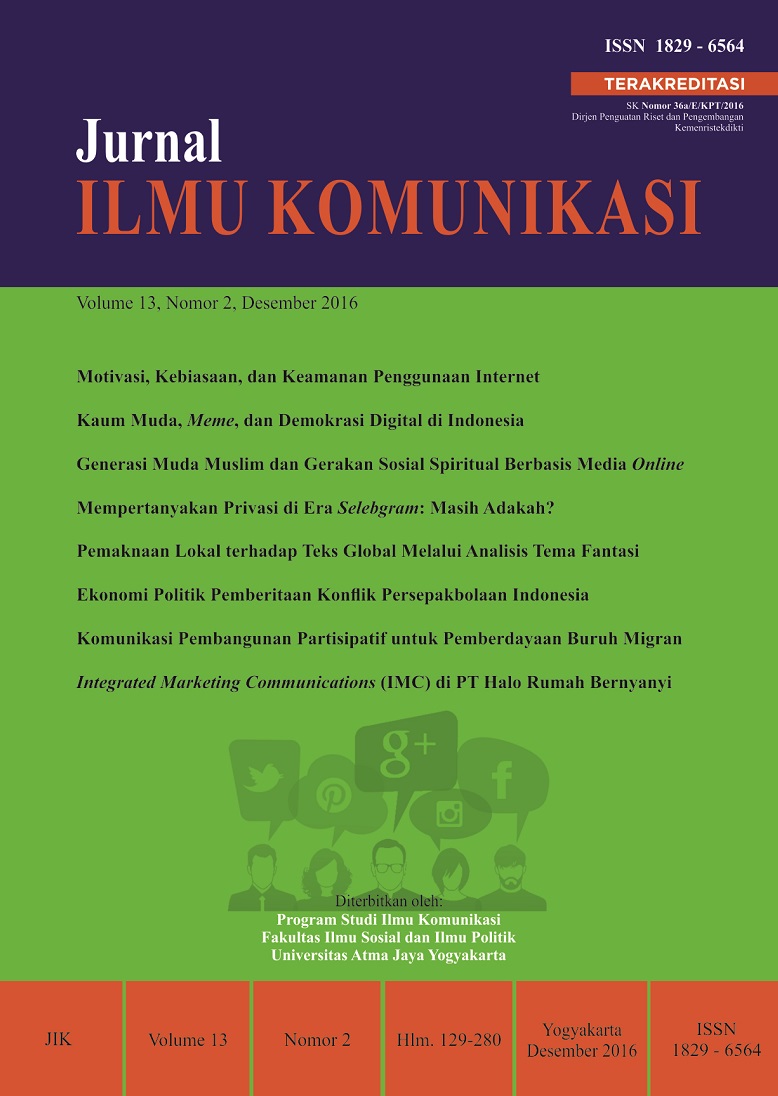Integrated Marketing Communications (IMC) di PT Halo Rumah Bernyanyi
DOI:
https://doi.org/10.24002/jik.v13i2.835Abstract
Abstract: This research aims to describe the effectiveness of Integrated Marketing Communication (IMC) in PT Halo Rumah Bernyanyi which, from the perspective of marketing strategy, could be studied by analyzing the segmentation, targeting, and positioning. Using case-study method with in-depth interview, the result shows that the implementation of IMC at PT Halo Rumah Bernyayi is arranged in one single strategy and tend to neglect the complexities of running multi-brand family karaoke-house. This considers as ineffective because it leads to “cannibalization” among brands, especially when costumer’s targetting is overlooked before drafting the IMC plan.
Keywords: Business, Integrated Marketing Communication, Marketing
Abstrak: Penelitian ini bertujuan untuk mendeskripsikan efektivitas penerapan Integrated Marketing Communications (IMC) yang dilihat dari aspek segmentation, targeting dan positioning. Metode penelitian adalah studi kasus dengan menggunakan wawancara mendalam. Hasil penelitian menunjukkan bahwa penerapan IMC di PT Halo Rumah Bernyanyi dibuat dalam satu strategi dan tidak memerhatikan kompleksitas dari aspek segmentation, targeting dan positioning sebagai pedoman dasar. Langkah tersebut dinilai tidak efektif karena dapat mengakibatkan “kanibalisasi” antar brand, terlebih jika perhatian terhadap target konsumen diabaikan sebelum menyusun perencanaan IMC.
Kata Kunci: Bisnis, Integrated Marketing Communications, Pemasaran
Downloads
Published
How to Cite
Issue
Section
License
Jurnal ILMU KOMUNIKASI is an academic journal. As such, it is dedicated to the open exchange of information. For this reason, JIK is freely available to individuals and institutions. Authors who publish in Jurnal ILMU KOMUNIKASI will release their articles under the Creative Commons Attribution (BY) License. This license allows anyone to copy and redistribute the article in any medium or format as well as remix, transform, and build upon the material for any purpose, even commercially as long as they credit the authors for the original creation. For details of the rights authors grants users of their work, see the "human-readable summary" of the license, with a link to the full license. (Note that "you" refers to a user, not an author, in the summary)
 This work is licensed under a Creative Commons Attribution 4.0 International License.
This work is licensed under a Creative Commons Attribution 4.0 International License.














